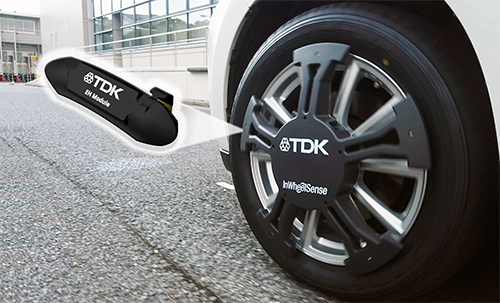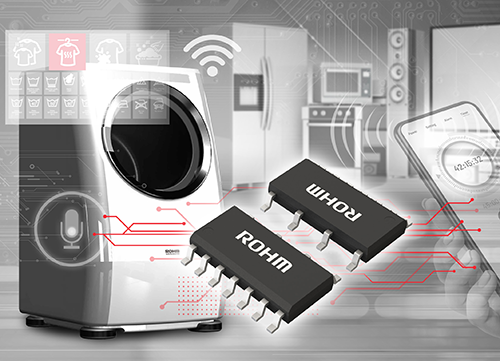CEATEC AWARD 2020
Digital City Planning in The Age of The New Normal Category
Grand Prix
InWheelSenseTM – Wheel conclusive sensing using piezoelectric power
TDK Corporation (Exhibit Area: Themed Exhibit - New Normal)
Click here to visit our booth.

Outline
InWheelSense enables power generation using energy-harvesting modules for automotive tires/wheels. It is also a sensing solution for acquiring data, powered and operated within the wheel. Power generation is enabled by piezoelectric elements which generate electricity from the counterforce applied to a tire when it contacts the road surface, while the output characteristics make it possible to detect different driving conditions. Thus, both sensing and power supply are fully contained within the wheel.
Assessment
InWheelSense facilitates the acquisition of new types of data important for autonomous driving, thus helping to ensure improved safety and comfort. Using piezoelectric elements, which have already proved themselves as in-vehicle components, this highly economical sensing solution is expected to contribute to “tire intelligence”. In addition, because it harvests the power necessary for sensing, signal processing and wireless data communication from within the rotating wheel, it is expected to serve in many applications, including the detection of tire pressure, tire wear, and road surface conditions. It will contribute to tire/wheel IoT applications that are environmentally friendly. Also highly evaluated was the stability provided by compressive stress during driving, which holds promise for expanding the possible uses for this power generation and sensing solution.
Semi Grand Prix
The Industry’s First Zero Cross Detection ICs "BM1ZxxxFJ series" Contributes to minimizing standby power in IoT home appliances
ROHM Co., Ltd. (Exhibit Area: General)
Click here to visit our booth.

Outline
With the accelerating adoption of IoT in recent years, more and more home appliances are continuously communicating via Wi-Fi, even when in standby mode. However, there are increasing demands to reduce power consumption, meaning significant innovation is needed. In looking for a solution, ROHM focused on the zero-crossing detection circuit, which all manufacturers have overlooked despite the fact that it is essential for any always-on home appliance. The company has developed a zero-crossing detection IC chip that reduces power consumption associated with zero-crossing detection by as much as 98% (compared with conventional systems), thus significantly contributing to a reduction in the power consumption of IoT-enabled home appliances.
Assessment
Appliance manufacturers are urgently required to reduce standby power, as regulations are expected to become stricter in the EU and other countries. Despite the fact that the number of required functions is increasing, reduced power consumption during application operation is increasingly sought. If this IC chip comes to be used a wide range of appliances, it will result in a considerable reduction in CO2 emissions, thus making a significant contribution to environmental protection. Based on the knowledge it has gained over many years of R&D, the company has adopted an “outside the box” approach that differs from conventional power consumption reduction methods. It focused on the hitherto ignored area of zero-crossing detection, enabling it to successfully develop an IC that has been highly evaluated. In addition to the much-anticipated reduction in standby power consumption offered by this chip, further achievements can be expected from collaboration with firmware engineers and designers of other component circuits.
CEATEC AWARD 2020 LIST